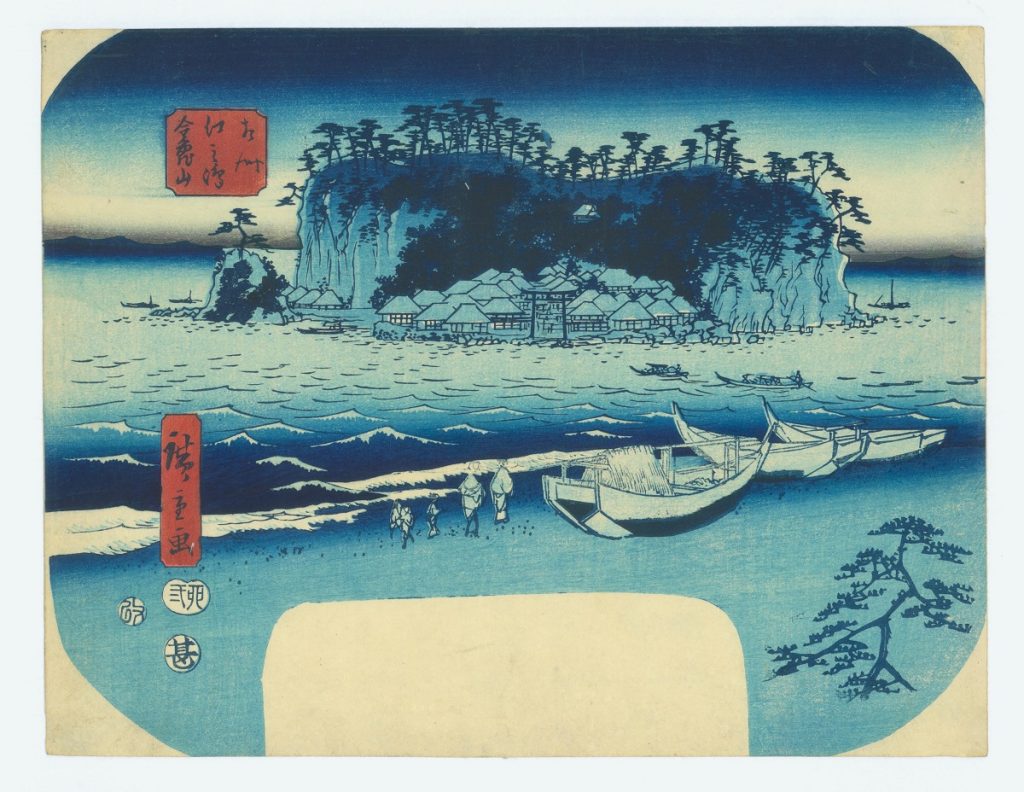
Utagawa Hiroshige (1797−1858), Kinkizan on Enoshima Island in Sagami Province (Sōshū Enoshima Kinkizan), Color woodblock print: aiban yoko-e uchiwa-e, 8⅞ x 11½ in. (22.5 x 29.2 cm), courtesy of Sebastian Izzard LLC Asian Art
Asia Week New York is excited to present our Summer 2021 Exhibition: Shades of Blue, which explores the many ways the color blue, especially in combination with white, transformed Asian Art. First produced by the Egyptians 6,000 years ago, the discovery of blue pigment, in the form of cobalt blue and indigo dyes, led to the creation of many now classic styles of decoration in Asian art. For example, blue and white porcelain became a major style of decoration from Safavid Persia to the Yuan, Ming and Qing dynasties of China and later throughout Asia, including Vietnam, Japan and Korea. Much admired throughout the world, it was also imitated in Europe.
In the early 19th century with the introduction of Prussian blue, a genre of Japanese prints, known as aizuri-e, exclusively used blue, while indigo dyes were extensively used in many Asian textiles, notably in the rustic textiles of rural Japan and the tribal textiles of Southeast Asia and China.
The online exhibition, which features one work of art from each of the 29 galleries and 6 auction houses–Bonhams, Christie’s, Doyle, Heritage, iGavel and Sotheby’s, goes live today at 4pm and runs until August 15.
